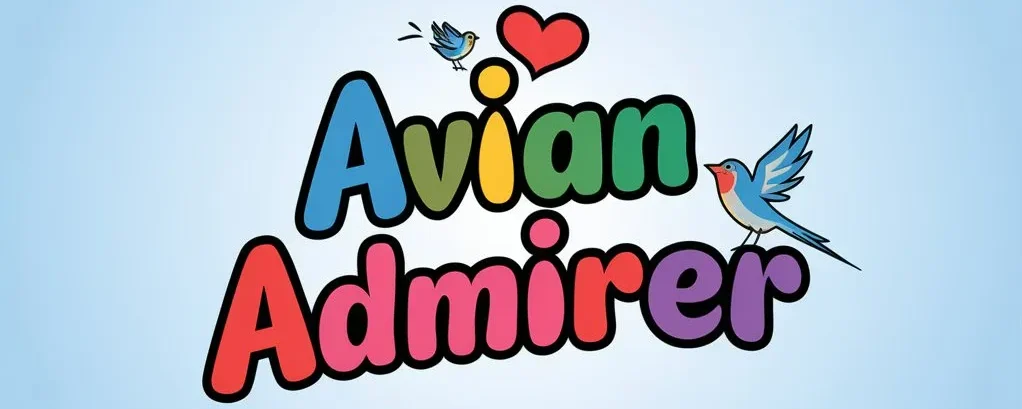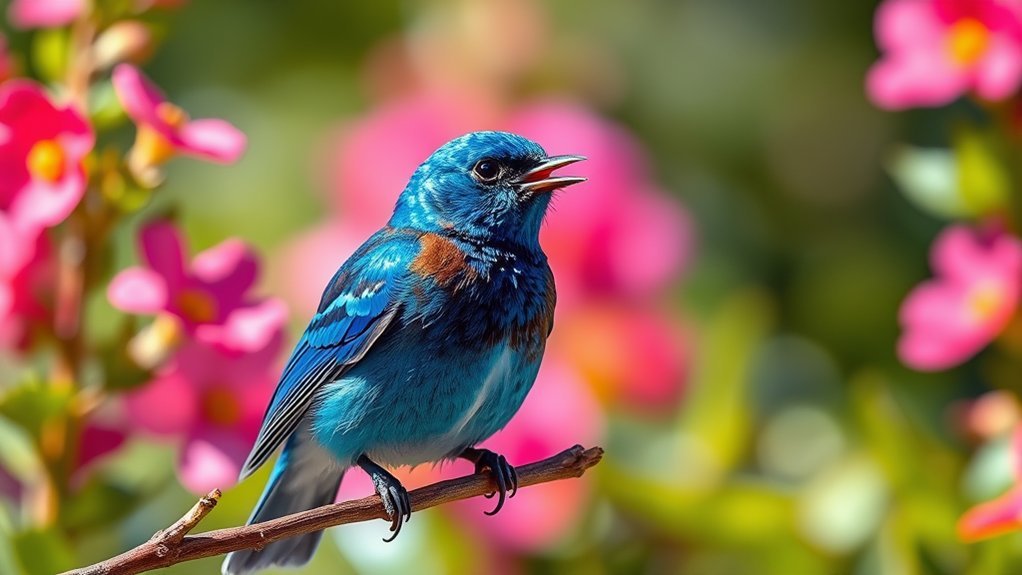Bird Sounds Like a Squeaky Toy: Playful Avian Calls
When you hear birds making sounds like squeaky toys, this noise is not just amusing. These calls play an important role in how birds communicate with each other. They can show a bird's health, energy, and feelings. Understanding these calls raises interesting questions. What behaviors lead to this playful sound?
Key Takeaways
Birds like mockingbirds and lyrebirds often make squeaky sounds. They imitate noises from their environment in a playful way. These squeaky calls help birds interact socially and strengthen bonds within their flocks. Vocal mimicry lets these birds express their identity, mood, and intentions clearly. Playful calls show that the birds are healthy and energetic. These sounds also help the group stay connected. Learning about these calls can deepen our understanding of bird behavior and social interactions.
Understanding Bird Vocalizations
When you hear birds chirping, remember that each sound has meaning. Birds use different calls to express their feelings and interact with others. For example, some calls warn of danger, while others indicate mating or defending territory.
Observing these calls can help you learn about bird behavior and social relationships. Each bird species has its own unique sounds, and individual birds may change their calls depending on the situation.
Common Birds That Mimic Squeaky Sounds
Birds make more than just traditional sounds. Some species can mimic squeaky toy noises, which can be both interesting and fun to hear. Two common examples are the mockingbird and the lyrebird.
These birds are skilled at imitating sounds from their surroundings, including squeaks. Mockingbirds switch between melodic songs and quirky sounds. Lyrebirds can copy a wide range of noises, including camera clicks and chainsaws.
This ability helps them communicate and adapt to their environments. Listening to these playful calls can deepen your appreciation for nature.
Birdwatching becomes an enjoyable experience for both beginners and seasoned enthusiasts.
The Science Behind Mimicry in Birds
Some birds are excellent mimics due to their unique vocal learning abilities. Birds like the lyrebird and mockingbird have specific brain structures that help them analyze and reproduce different sounds. This learning process starts when they're young. They listen to their parents' calls and other sounds in their surroundings. Through practice, these birds perfect their vocal skills and can create detailed imitations.
Mimicry is important for several reasons. It can help birds attract mates or defend their territory.
Playful Behavior: Why Do Birds Make These Sounds?
Birds often make sounds that sound like squeaky toys.
This behavior isn't just mimicry; it shows social interaction and reveals their personality. When birds produce these sounds, they're likely strengthening their relationships within their flock. This communication indicates that the birds are healthy and energetic, contributing to group cohesion.
The squeaky calls may also express their joy, showing their psychological well-being.
The Role of Squeaky Calls in Communication
Squeaky calls in birds may seem unimportant, but they're vital for communication. Birds use these sounds to share their identity, mood, and intentions.
When you pay attention, you can see that these calls are organized. They help birds attract mates, warn others of danger, or coordinate movements within a group.
This communication strengthens their social bonds and helps them feel part of their flock. By understanding these playful calls, birds improve their chances of survival and build strong relationships, turning simple sounds into important tools for interacting with their surroundings.
Observing Squeaky Toy Sounds in Nature
You'll likely hear various bird species making sounds similar to squeaky toys. It's important to listen to these sounds in their natural environment.
Birdwatching can help you learn to identify these squeaky calls. Use binoculars to see the birds clearly while you focus on their calls. These sounds often occur during mating or when birds protect their territory.
Observe the context to understand the social interactions in the flock. Consider keeping a journal of your observations, noting the bird species and the corresponding squeaky sounds. This will deepen your connection to nature.
With time and practice, you'll enhance your understanding of these sounds and improve your birdwatching experience. Enjoy the process!
How to Attract Playful Birds to Your Backyard
To attract playful birds to your backyard, you need to meet their basic needs. Start by placing bird feeders filled with good seeds, like sunflower or nyjer seeds. These foods draw in different bird species.
Position your feeders close to bushes or trees. This offers birds shelter from predators.
Make your yard more welcoming by planting native plants. These plants provide cover and berries for the birds.
Also, add a bird bath. Birds need water for drinking and bathing, and a bath can be a refreshing spot for them.
Keep your backyard quiet during feeding times. Limit disturbances and keep pets inside to help birds feel safe.
When you provide food, shelter, and water, you encourage a lively bird community. Enjoy the cheerful sounds they bring to your space!
Frequently Asked Questions
Can I Train My Pet Bird to Mimic Squeaky Sounds?
Yes, you can train your pet bird to mimic squeaky sounds. Use clear techniques for mimicking. Understand your bird's behavior. This training will strengthen your bond and make your bird's environment more enjoyable. It will also boost its vocal skills.
Are Squeaky Bird Calls Harmful to Other Wildlife?
Squeaky bird calls can disrupt communication among birds. These unusual sounds may confuse wildlife interactions. They can affect hunting and mating behaviors. This disruption can lead to problems for species that depend on traditional calls for survival. Understanding how these calls impact nature is important for maintaining wildlife balance.
Do Specific Bird Species Make More Squeaky Sounds Than Others?
Yes, some bird species are noisier than others. For example, parrots and certain sparrows often make squeaky sounds. This suggests that they have special ways of using their voices to communicate and interact with their environment.
How Can I Record Bird Sounds Effectively in My Backyard?
To record bird sounds in your backyard, follow these steps:
- Choose Good Equipment: Use a high-quality microphone and recorder suitable for outdoor use.
- Select the Right Spot: Place your microphone in a location where there is little background noise. Look for areas with clear views of the birds.
- Be Patient: Spend time observing bird behavior. Wait quietly for the birds to come close and start singing or calling.
- Check Your Settings: Make sure your recording device is set to capture clear, high-quality audio.
- Record: Start recording when you hear the birds. Try to minimize movement while recording to avoid distractions in the sound.
What Time of Day Are Birds Most Likely to Make Playful Calls?
Birds are most likely to make playful calls during the morning chorus, especially at dawn. They interact playfully to establish their territory and attract mates. This creates a lively and joyful atmosphere in your backyard. Enjoy the cheerful sounds of birds as they greet the new day.

Ava is a bird enthusiast and nature lover who has spent countless hours observing and learning about the fascinating world of birds. With a passion for sharing her knowledge and inspiring others to appreciate the beauty of birds, Ava writes about her experiences and insights on avianadmirer.com.







